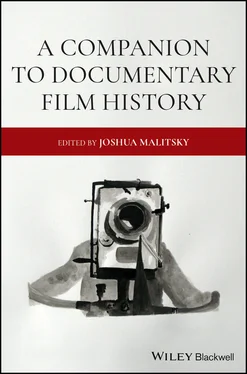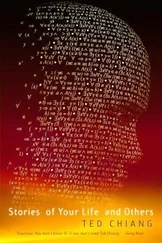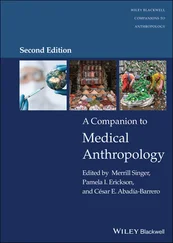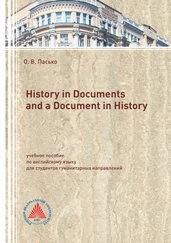Authors, Authorship, and Authoring Agencies
The issue of authorship is central to many definitions of documentary; for John Grierson, it is a key aspect that distinguishes the documentary from less thoughtful or refined nonfiction genres. But authorship, as the essays in this section make plain, is a highly contested issue for documentary, encompassing questions about who controls or owns the image and debate over the status of documentary as commerce or journalistic speech. In addition to the definition, legal and academic, authorship remains a key framework for histories of documentary and nonfiction film. Following these arguments, the essays in this section take it as a frictive phenomenon to be explored with rigorous attention to context. James Cahill even develops a term that captures the approach to authorship these essays take: AuNT or Author‐Network Theory, which accounts “for the interplay of forces involved in the creation of nonfiction and documentary films.” The essays in the section likewise offer innovative conceptual frameworks for understanding the role of individuals, communities, and institutions in efforts of creative labor and the agency undergirding them. They do so across history, context, and nonfiction media form, interrogating authorial functions related to, among others, the creative and the artisanal, visibility and invisibility, documentary versus avant‐garde historiography, and concluding with the issue of human subjectivity and posthuman modalities.
The third section of this volume focuses on how scholars of nonfiction film work with both individual films and bodies of films as a way of understanding cinema’s relationship to the past. Like the other categories, a “movement” is one of the most enduring frameworks scholars have for classifying bodies of films—both nonfiction and fiction. However, the connective tissue that links films within a movement is not always self‐evident. The essays in this section interrogate those connections by addressing films that have been classified as part of film movements but do so in a way that establishes new, unanticipated connections with other films—those thought to be part of that movement as well as those outside of it—and cultural currents. As such, they urge us to reconsider the dominant associations of film movements with European cinema and with fiction film. Moreover, the term movement in scholarship on documentary film often takes on multiple meanings, referring to both the body of films and, frequently, the political movement with which they are aligned. The essays in this section explore in depth the implications of thinking of these films in relation to the movements with which they are associated. Sometimes this requires rigorous attention and sensitivity to the politics of the moment (Waugh), at others it requires reimagining what constitutes the movement itself (Gaines), and still at others it requires subverting the accepted genealogies of one of the most prominent movements in film history (Caminati).
Media archaeology is an approach to studying media history that aims to challenge what many see as teleological narratives of progress and technological development. Applying Michel Foucault’s archaeological approach to media and technology, scholars sought to identify forgotten examples in media history and to do so explicitly across media. It aims to radically destabilize narratives about media history, hierarchical relations across media, and the epistemological stability of cinema, radio, television, new media, and other forms. As Malte Hagener argues, the application of such an approach to documentary is generative. Documentary’s reliance on the dynamic between the fragment or “the document” and its insertion into a new context, “the documentary,” is ripe for media archaeology’s interest in the “materialities and medialities” of ruptures and originary contexts. It also aligns with the efforts of documentary scholars to continually question documentary’s definitional center and borders. The essays in this section take up this challenge, applying rigorous historical research to an array of nonfiction film material, looking “not only for the breaks and fissures, but rather for the contact zones and adhesive joints at which new formations emerge and new concepts are born.”
Audiences and Circulation
Traditionally less about entertainment than about education, instruction, and preservation, documentaries have rarely attracted substantial theatrical box office success. As a result, filmmakers and producers have had to argue that they have audience impact in a different way—by claiming that documentaries have lasting effects on viewers. But such claims, Brian Winston asserts, have little verifiability. The goal of sparking audiences to act in support of the film’s argument has been achieved on a limited basis and with limited, targeted communities. The more common effect of mainstream documentaries (for Winston, this is part of the Griersonian tradition) on a mainstream audience has been an empathetic response that seldom led to social action. But any assessment of audience impact, whether as empathy or action, has been made in the absence of an archive. As Winston notes, “Our historical understanding of viewers’ responses is trapped between the limitations of positivist social science and, essentially, anecdotage.” The essays in this section point to areas and methods that aim to redress these gaps. They urge us to reconsider established narratives of nonfiction film history: about the emerging dominance of fiction film entertainments inside and outside of the movie theater from 1907–1910 (Waller), and about the audiences and spaces of exhibition for films central to the Western European and American documentary canon in the late 1920s and early 1930s (Winston). They think through the implications of this historical (mis)understanding: on how the meaning of a film we thought we knew can be transformed both over time and across reception context (Mestman), and how those who dream of or project a certain type of audience engagement would be wise to think about how viewers have historically interacted with media technologies both old and new (Uricchio).
1 Acland, C. and Wasson, H. (eds.) (2011). Useful Cinema. Durham, NC: Duke University Press.
2 Barnouw, E. (1974). Documentary: A History of the Non‐fiction Film. Oxford: Oxford University Press.
3 Barsam, R. (1973). Non‐Fiction Film. New York: E. P. Dutton.
4 Coles, R. (1998). Doing Documentary Work. New York: New York Public Library.
5 Corner, J. (2000). What Can We Say about “Documentary?”. Media, Culture, and Society 22 (5): 681–688.
6 Cowan, M. (2014). Walter Ruttmann and the Cinema of Multiplicity. Amsterdam: Amsterdam University Press.
7 Dahlquist, M. and Vonderau, P. (eds.) (2020). Petrocinema: Modern Imaginaries and the Oil Industry. London: Bloomsbury.
8 Gaines, J. and Renov, M. (eds.) (1999). Collecting Visible Evidence. Minneapolis: University of Minnesota Press.
9 Grierson, J. (1966). Grierson on Documentary (ed. F. Hardy). Berkeley: University of California Press.
10 Hagener, M. (2007). Moving Forward, Looking Back: The European Avant‐garde and the Invention of Film Culture, 1919–1939. Amsterdam: Amsterdam University Press.
11 Hediger, V. and Vonderau, P. (eds.) (2009). Films That Work: Industrial Film and the Productivity of Media. Amsterdam: Amsterdam University Press.
12 Kahana, J. (ed.) (2016). The Documentary Film Reader. Oxford: Oxford University Press.
13 Juhasz, A. and Lebow, A. (eds.) (2015). A Companion to Documentary Film. Malden, MA: Wiley Blackwell.
Читать дальше












